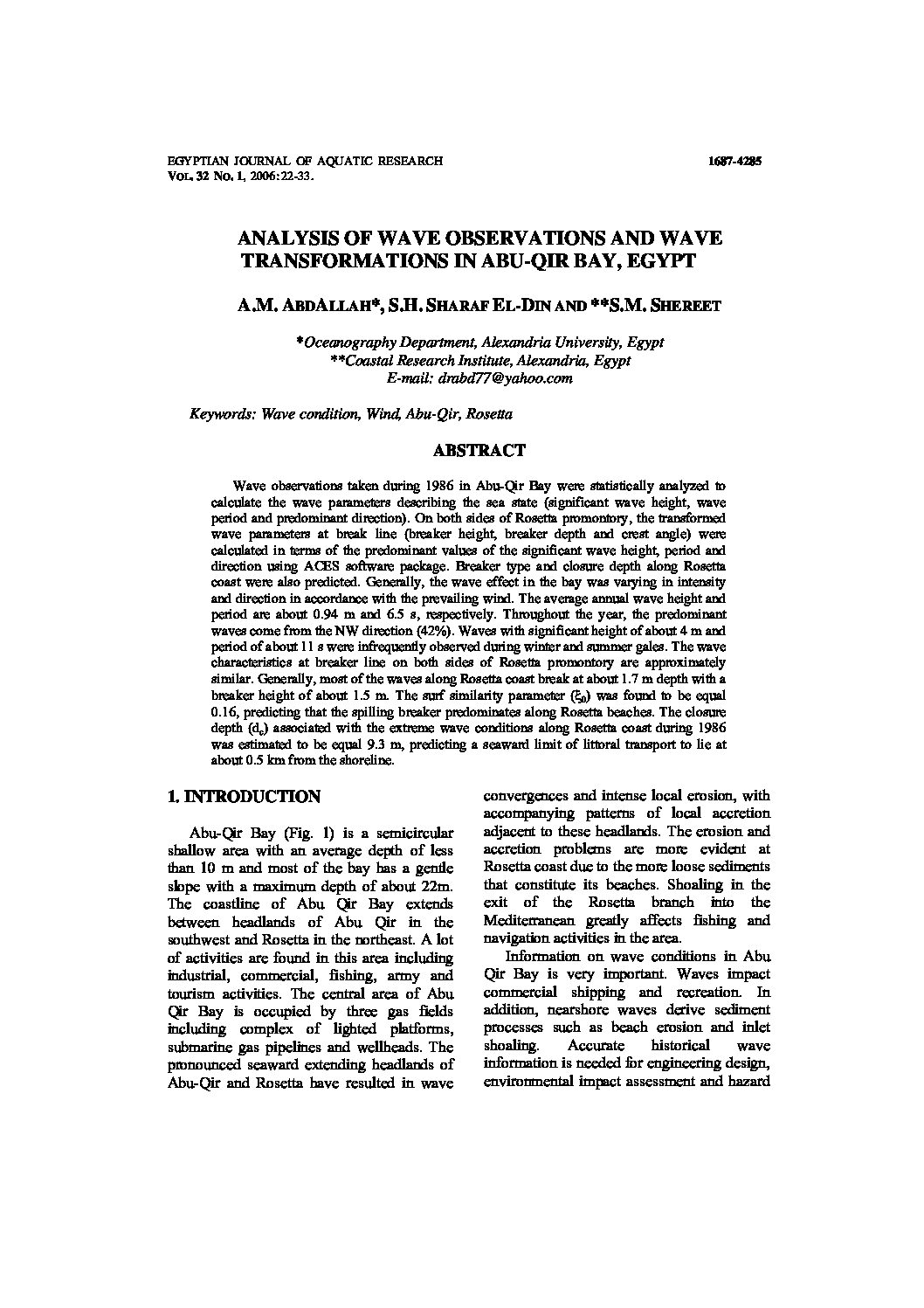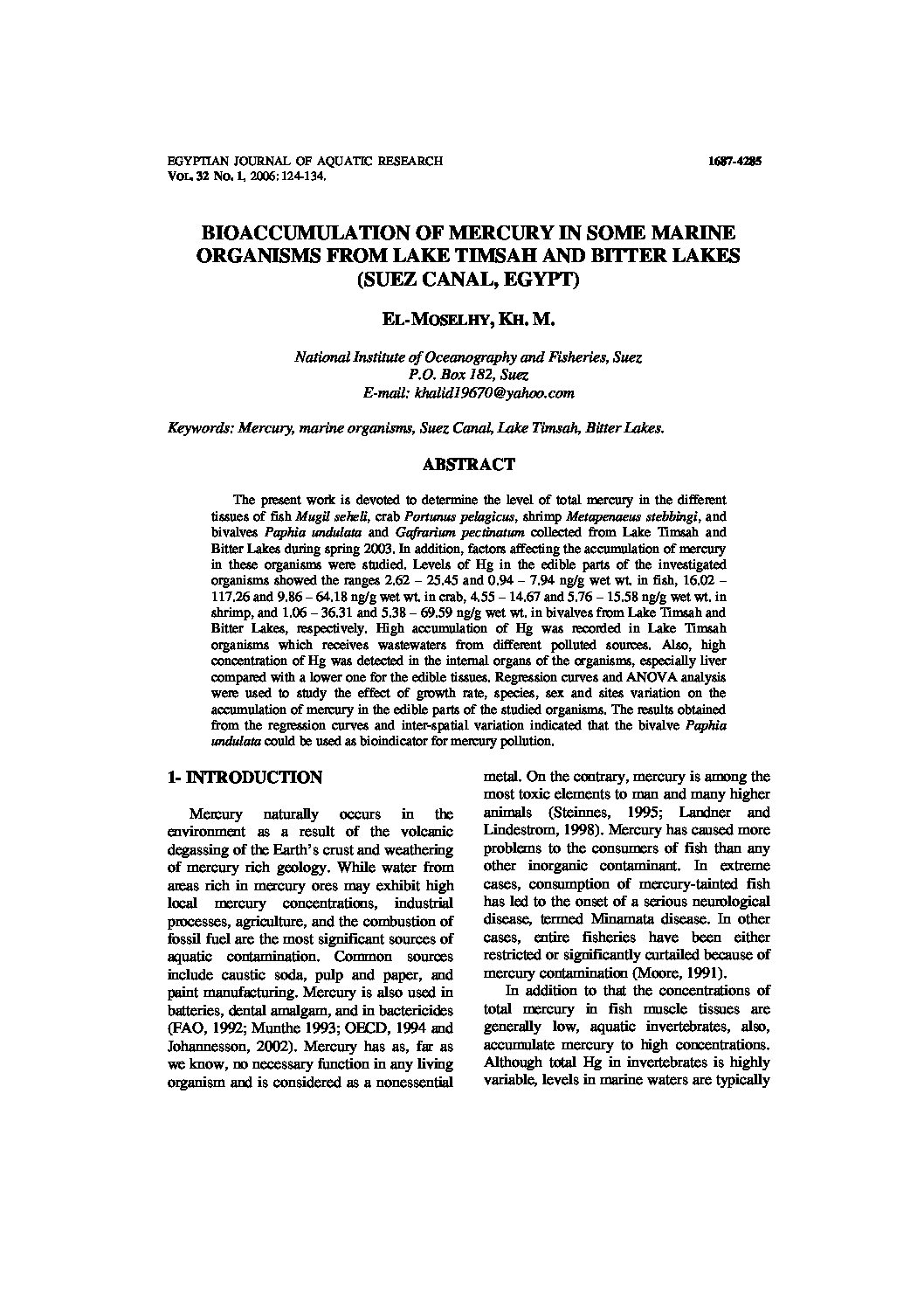Categories
vol-32EFFECT OF PHYSICO-CHEMICAL FACTORS AND HUMAN
IMPACTS ON CORAL DISTRIBUTION AT TOBIA KEBIR
AND SHARM EL LOLY, RED SEA-EGYPT
MOHAMMED S.A. AMMAR AND MONTASER A. MAHMOUD**
* National Institute of Oceanography and Fisheries, Suez,
P.O. Box 182, Egypt
** Hurghada Marine Research Station, National Institute of Oceanography and Fisheries,
Hurghada, Egypt
Keywords: Coral reef, distribution, impacts, physico-chemical factors, sedimentation, Red Sea
ABSTRACT
Using SCUBA equipment and the line intercept transect (LIT), the effect of physical
factors and human impacts on coral distribution were studied in two Red Sea sites (Sharm
El Loly and Tobia Kebir) throughout the period from September, 2003 to October, 2004.
The percentage cover of coral species in Northern Sharm El Loly was higher than in Tobia
Kebir which might be attributed to optimum temperature and better light intensity. Diving,
swimming, boat anchoring and fish feeding by divers are the main human impacts
decreasing the percentage cover of corals at Tobia Kebir but fishing seems to have no role
due to its limited level. The lower recorded amount of dead corals at Sharm El Loly though
it is highly affected by fishing boats, is due to the fact that these boats anchor on the Sharm
terminal, away from the reef and go to open water through the middle of the Sharm.
Massive corals, especially Porites sp., were more abundant than branching corals in Tobia
Kebir as they can tolerate turbidity and less susciptible to breakage caused by trampling,
diving and swimming. However, the hydrocoral Millepora dichotoma was most dominant
in Sharm El Loly as it prefers high illumination. A total of eleven species of corals were
recorded in Tobia Kebir, compared to thirty-five species in Sharm El Loly. Besides, the
diversity values were lower at Tobia Kebir than at Sharm El Loly, especially on the reef flat
and 1-5 m depth zone, due to the higher sedimentation rate in the former site.







